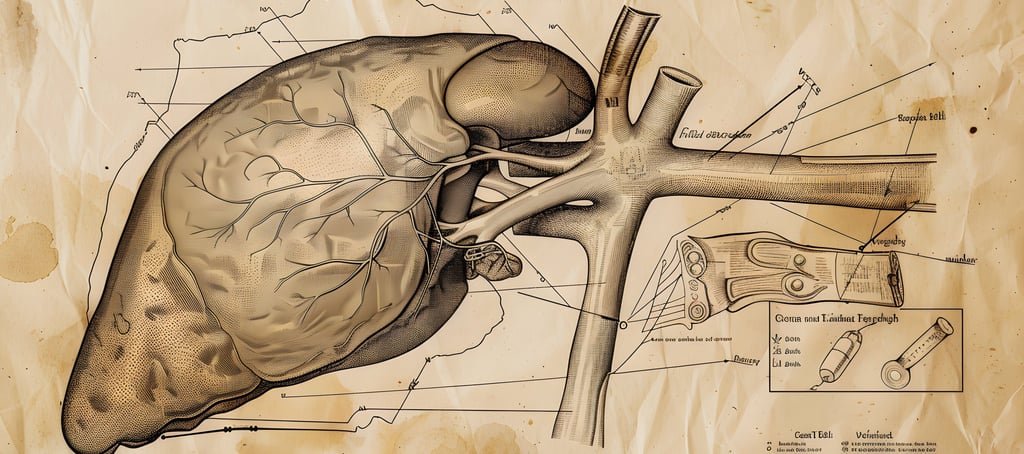The liver and the mycotoxins
Learn how mycotoxins affect the liver
Sara Alonso
10/19/20252 min read


The liver and the mycotoxins
Learn how mycotoxins affect the liver
I'm always asked about how mycotoxins affect the body and in the next articles I will explain, system by system, how mycotoxins affect different parts of the body.
Mycotoxins are toxic chemicals produced by certain types of molds (such as Aspergillus, Fusarium, and Penicillium) that can contaminate your environment. The liver is one of the primary targets because it is the body’s main detoxification organ — it has to process and metabolize these toxins, which exposes liver cells directly to their damaging effects.
How mycotoxins damage the liver?
1. Absorption & Delivery to the Liver.
After ingestion, mycotoxins are absorbed through the intestines and transported to the liver via the portal vein. This is why liver damage occurs early.
2. Metabolic Activation (Making Them Even More Toxic).
The liver tries to detoxify mycotoxins using enzymes like cytochrome P450.
For some mycotoxins — especially aflatoxin B1 — this process can convert them into reactive metabolites that bind to DNA and proteins, causing direct cellular injury.
3. Oxidative Stress
Many mycotoxins promote excessive production of reactive oxygen species (ROS).
This leads to:
· Damage to cell membranes (lipid peroxidation)
· Mitochondrial dysfunction
· Cell death (apoptosis and necrosis)
4. Inflammation
Mycotoxins trigger inflammatory pathways (e.g. NF-κB activation), leading to:
· Kupffer cell (liver macrophage) activation
· Release of inflammatory cytokines
· Chronic liver inflammation
· Long-term inflammation can progress to fibrosis and eventually cirrhosis.
5. Genotoxicity & Cancer Risk
Some mycotoxins (especially aflatoxins) are carcinogenic.
They bind to DNA, causing mutations. A well-known example is a mutation in the p53 tumor suppressor gene, which is strongly linked to hepatocellular carcinoma (liver cancer).
Common Mycotoxins That Affect the Liver:
Aflatoxin B1
Aspergillus: DNA damage → liver cancer
Ochratoxin A
Aspergillus & Penicillium: Oxidative stress and fibrosis
T-2 toxin / Trichothecenes
Fusarium: Inflammation & cell death
Zearalenone
Fusarium: Less direct liver damage, but endocrine effects that stress the liver.
Mycotoxin-related liver stress can show up in non-specific, slow-developing symptoms at first, because the liver has a high “reserve capacity.” Many people don’t realize their liver is under strain until symptoms accumulate.
Below is a helpful overview:
Early / Subtle Symptoms: These are often the first warning signs but are easy to overlook:
Symptom:
Fatigue / low energy
Impaired detoxification → toxin buildup
Brain fog / difficulty concentrating
Ammonia + inflammatory byproducts not cleared efficiently
Loss of appetite or mild nausea
Liver inflammation alters digestive signaling
Mild right-upper abdominal discomfort or fullness
Inflammation/swelling of liver tissue
Unexplained headaches
Impaired metabolic clearance of toxins
Moderate / Progressive Symptoms: These appear when inflammation and metabolic disruption worsen:
Digestive issues (bloating, pale stools)
Poor bile flow from liver stress
Dark urine
Increased bilirubin excretion
Pruritus (itchy skin)
Bile acids and toxins circulating in blood
Muscle weakness
Metabolic dysfunction & nutrient depletion
Increased sensitivity to alcohol or medications
Reduced detox capacity
Why symptoms vary so much
The effects depend on:
Type of mycotoxin (aflatoxins = most carcinogenic, ochratoxin = fibrotic, etc.)
Dose and duration of exposure
Nutrient status (antioxidants like glutathione can buffer damage)
Genetics (P450 enzyme variants change detox rates)
If your liver issues have increased in the last years and you feel that the symtoms could be related to you, please, make an appointment with your doctor and let him check your liver markers in blood. If noone has an explanation for this worsening, mycotoxins could be causing your problems.
Make an appointment! We can throw light in the situation!
Health
Empowering wellness through functional diagnostics.
CONTACT US:
info@saralonsofdneuropemold.com
© 2025. All rights reserved.
